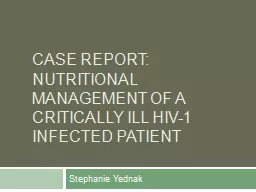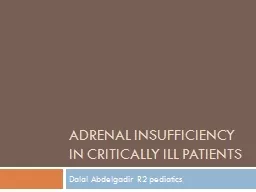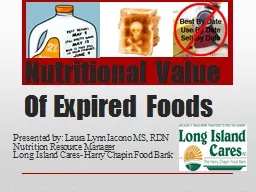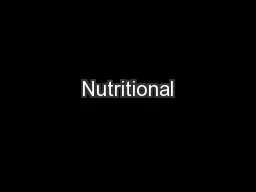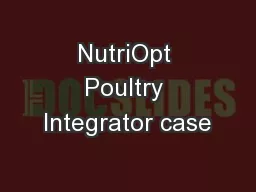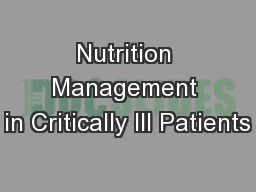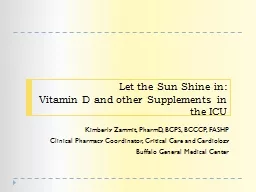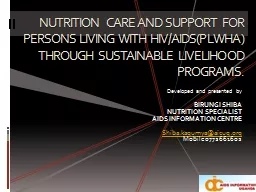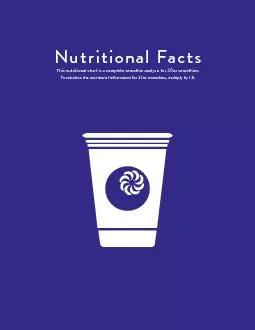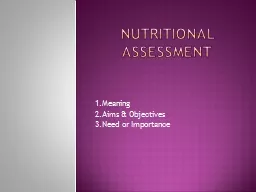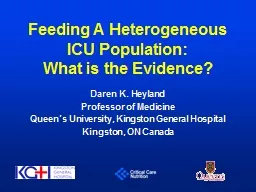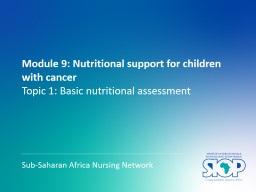PPT-Case Report: Nutritional Management of a Critically Ill HIV
Author : test | Published Date : 2017-08-20
Stephanie Yednak Disease Description HIV causes a progressive decline in cellular immunity Leads to Acquired Immunodeficiency Syndrome AIDS Attacks CD4 thelper
Presentation Embed Code
Download Presentation
Download Presentation The PPT/PDF document "Case Report: Nutritional Management of a..." is the property of its rightful owner. Permission is granted to download and print the materials on this website for personal, non-commercial use only, and to display it on your personal computer provided you do not modify the materials and that you retain all copyright notices contained in the materials. By downloading content from our website, you accept the terms of this agreement.
Case Report: Nutritional Management of a Critically Ill HIV: Transcript
Download Rules Of Document
"Case Report: Nutritional Management of a Critically Ill HIV"The content belongs to its owner. You may download and print it for personal use, without modification, and keep all copyright notices. By downloading, you agree to these terms.
Related Documents

